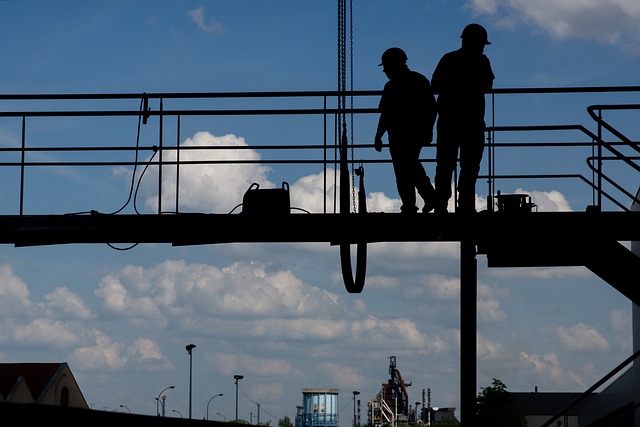If you’re here, it’s probably because you’re dealing with some tricky issues on your construction project, particularly concerning temporary structures and ensuring everything is up to speed with CDM regulations. Don’t worry, you’re not alone. At Blackstone Solicitors, we’ve helped many clients across England and Wales navigate these complexities. Let’s break down what you need to know about CDM regulations when it comes to temporary structures.
Free Initial Telephone Discussion
For a free initial discussion with a member of our New Enquiries Team, get in touch with us today. We are experienced in dealing with all the legal aspects of CDM Regulations, and once instructed, we will review your situation and discuss the options open to you in a clear and approachable manner. Early expert legal assistance can help ensure you are on the best possible footing from the start and also avoid the stress of dealing with these issues on your own. Simply call us on 0345 901 0445 or click here to make a free enquiry and a member of the team will get back to you.
What Are CDM Regulations?
First things first, let’s clarify what CDM regulations are. The Construction (Design and Management) Regulations, commonly known as CDM regulations, were introduced to improve health and safety in the construction industry. These regulations are all about ensuring that health and safety considerations are at the forefront of planning and managing construction projects.
Why CDM Regulations Matter
CDM regulations are crucial because they help prevent accidents, ensure safe working conditions, and promote a culture of safety throughout the construction process. They apply to all construction projects, from small domestic jobs to large commercial developments, including temporary structures.
Temporary Structures: Definition and Examples
When we talk about temporary structures, we mean constructions that are not intended to be permanent. These can include things like scaffolding, site offices, hoardings, stages for events, and temporary roofs. Despite their temporary nature, these structures must comply with CDM regulations to ensure safety.
CDM Regulations and Temporary Structures: Key Points
Now, let’s dive into the specific CDM requirements for temporary structures. Here’s what you need to consider:
- Roles and Responsibilities
CDM regulations outline specific roles and responsibilities for everyone involved in a construction project. When it comes to temporary structures, these roles are just as important.
- The Client
As the client, you have a duty to ensure that the project is set up to run safely. This includes making sure that a CDM coordinator is appointed if the project is notifiable (lasting longer than 30 days or involving more than 500 person-days of work).
- The Principal Designer
The principal designer is responsible for planning, managing, and monitoring the pre-construction phase. This includes considering the safety implications of any temporary structures needed for the project.
- The Principal Contractor
The principal contractor must plan, manage, and monitor the construction phase, ensuring that the temporary structures are safe and compliant with CDM regulations.
- Contractors and Workers
All contractors and workers have a duty to comply with the CDM regulations, follow safety instructions, and report any hazards.
- Risk Assessment and Method Statements (RAMS)
For temporary structures, a thorough risk assessment and method statement (RAMS) are essential. These documents should outline the hazards associated with the temporary structures and the measures in place to control these risks.
- Design Considerations
The design of temporary structures should consider safety from the outset. This includes ensuring that the structures are designed by competent individuals and that they are capable of withstanding the loads they will be subjected to.
- Inspection and Maintenance
Regular inspection and maintenance of temporary structures are crucial. These structures can be exposed to varying weather conditions and loads, making ongoing safety checks necessary.
- Training and Competence
Ensure that all workers involved with temporary structures are adequately trained and competent. This includes understanding how to erect, use, and dismantle the structures safely.
Common Challenges and How to Overcome Them
- Lack of Clarity on Roles
One common issue is confusion over who is responsible for what under CDM regulations. Clear communication and proper documentation can help overcome this.
Solution: Clear Contracts and Communication
Ensure that all roles and responsibilities are clearly outlined in contracts and communicated to all parties involved. Regular meetings can help maintain clarity and address any issues promptly.
- Inadequate Risk Assessments
Sometimes, risk assessments for temporary structures are either overlooked or not thorough enough.
Solution: Comprehensive RAMS
Invest time in creating detailed risk assessments and method statements. Involve experienced professionals who can identify potential hazards and suggest effective control measures.
- Poor Design and Planning
Temporary structures are often seen as less critical, leading to poor design and planning.
Solution: Competent Design and Planning
Treat temporary structures with the same level of importance as permanent ones. Engage competent designers and ensure proper planning to mitigate risks.
How Blackstone Solicitors Can Help
Navigating CDM regulations, especially concerning temporary structures, can be challenging. At Blackstone Solicitors, we offer expert legal advice and support to ensure your project complies with all relevant regulations. Here’s how we can assist:
- Legal Advice and Guidance
Our team can provide comprehensive legal advice on CDM regulations, helping you understand your obligations and how to fulfil them.
- Contract Review and Drafting
We can review and draft contracts to ensure that all roles and responsibilities are clearly defined, reducing the risk of disputes and non-compliance.
- Risk Management Support
We offer support in developing thorough risk assessments and method statements, ensuring all potential hazards are identified and managed effectively.
Final Thoughts
Dealing with temporary structures under CDM regulations can be complex, but it’s essential for ensuring the safety and success of your construction project. By understanding your responsibilities, conducting thorough risk assessments, and engaging competent professionals, you can navigate these challenges effectively.
At Blackstone Solicitors, we’re here to support you every step of the way. If you have any concerns about CDM regulations or need assistance with any aspect of your construction project, don’t hesitate to reach out. Our experienced team is ready to help you achieve a safe and compliant project outcome.
Remember, safety and compliance are paramount in construction. With the right approach and expert guidance, you can ensure your project runs smoothly and successfully.
We have a proven track record of helping clients deal with CDM regulations. We will guide you diligently and ensure all checks are carried out swiftly and efficiently and we firmly believe that with the right solicitors by your side, the entire process will seem more manageable and far less daunting. You can read more about the range of construction law services we offer by clicking here: https://blackstonesolicitorsltd.co.uk/construction-solicitors/
How to Contact Our Construction Solicitors
It is important for you to be well informed about the issues and possible implications of CDM regulations. However, expert legal support is crucial in terms of ensuring a positive outcome to your case.
To speak to our Corporate solicitors today, simply call us on 0345 901 0445, or click here to make a free enquiry. We are well known across the country and can assist wherever you are based. We also have offices based in Cheshire and London.
Disclaimer: This article provides general information only and does not constitute legal advice on any individual circumstances.



